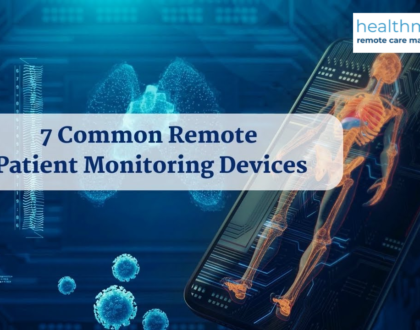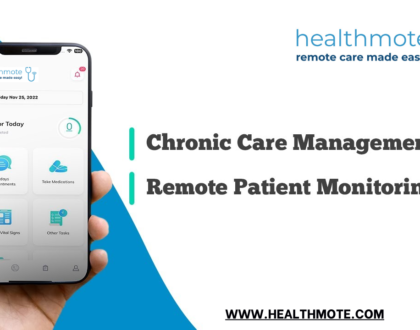
10 benefits of Remote Patient Monitoring (RPM)
RPM Benefits
In the last few decades, a much more literate patient population has begun to emerge. This savvy group of seniors is benefiting from an unprecedented slew of innovative advances in the healthcare industry. The industry is intent on weaning itself off of the outdated volume-based, fee-for-service system that creates a disincentive for improving outcomes. The national trend is to replace fee-for-service with “value-based” reimbursement and “at-risk”, or “total cost of care” payor contracts. In order for providers to succeed in this new environment, innovative solutions are needed to improve access to care for all patients, especially those at high risk of hospitalization. Traditional brick-and-mortar care-delivery solutions will always be relevant, but supplementing care with remote solutions enhances the care team and engages patients like never before. Remote Patient Monitoring (RPM) allows a hospital or practice to monitor a patient’s vital signs, such as blood pressure, oxygen saturation (pulse oximeter), heart rate, respiratory rate, and blood glucose. This is especially important for those patients with one or more chronic conditions that require constant monitoring to allow them to enjoy life and avoid hospitalization and emergency room visits because of exacerbation of their chronic condition. Remote patient monitoring is a health care delivery method that benefits everyone; – patients, providers, caregivers, and the healthcare system as a whole, by using technological advances as an advantage to gather patient data. There are many important benefits to consider, RPM increases access to virtual care, improves patient-provider communication opportunities, and enhanced patient involvement in self-management of chronic care. Now that Medicare and other insurances have started realizing the benefits of such services for their members, they too have started reimbursements for the service. Looking at the current scenario, this seems to be the best time to introduce Remote Patient Monitoring platform in your practice.
Remote patient monitoring is fast becoming a potential component for the management of patients with complex chronic conditions to provide reliable and real-time physiological measurements for supporting clinical decisions on treatment of the condition, and improve patient self-management. Remote patient monitoring involves providing patients up with medical devices to monitor chronic conditions.
Remote patient monitoring offers many benefits to Patients, Providers, and Payers, in a variety of ways:
1: Focuses on data driven clinical decision making.
2: Improves clinician-patient communication.
3: Increases a positive patient engagement.
4: Improves the patient experience and satisfaction.
5: Improves access to care, no matter what the geographical challenges.
6: Reduces costs of care for payers by reducing hospitalization and emergency room (ER) visits while improving revenue for primary care providers.
7: Improved clinical staff efficiency because they can contribute directly to practice revenue.
8: Prevents the spread of infectious diseases and Hospital-Acquired Infections, by avoiding unnecessary hospital encounters.
9: Facilitates self-management & care plan adherence.
10: Care givers take comfort knowing their loved ones are cared for in a more robust fashion.
Remote patient monitoring benefits patients, providers and payors by facilitating improved communication & strengthening the patient-provider relationship. The result is patient satisfaction and improved outcomes. RPM provides the clinician with a more accurate picture of their patients’ health, allowing the clinician to see trends in symptoms over time. When clinicians have a more robust data set, they are able to deliver care more proactively and effectively. Remote patient monitoring also helps the provider evaluate whether the patient’s condition is stabilized, deteriorating, or improving.
Remote patient monitoring has made an impact on both in-patient care, as well as ambulatory care. Demand for better oversight, coupled with an influx of demand from an aging population has created an opportunity for innovation. This has led to a tremendous increase in the use of remote monitoring in healthcare facilities for chronically and critically ill patients. The expansion of remote monitoring means a smaller workforce can care for more patients without physically rounding from bed to bed. While nothing replaces bedside care, remote monitoring provides the means for continuous monitoring that was never before possible.
The prevalence of chronically ill patients requiring remote patient monitoring is expected to grow. Technical solutions can greatly assist medical personnel and caregivers. In the future, FDA cleared wearable devices can be used to monitor metabolism, and central nervous system function. The most important points that should be addressed in future studies are the performance of remote monitoring systems, the safety parameters, the clinical and economic outcomes, as well as the acceptance of the devices by patients, caretakers, and healthcare professionals.
While RPM can cleary expand access and oversight of high-risk patients, there are some clear challenges to consider:
(1) the shortage of clinicians -24-7 monitoring of physiological parameters by qualified healthcare personnel is often the biggest challenge. The reasons range from monetary to location of the patient but the problem can be daunting where critical care morbidity and mortality is being discussed.
(2) the periodicity of vital function monitoring (e.g. Blood Pressure Monitoring & Pulse Oximeter monitoring episodic measuring of blood pressure leads to missing important critical events such as hypertension, hypotension, and hypoxia). Constant monitoring and updating of same with concerned physician can often pinpoint and prevent a likely life and death situation.
(3) failure to catch and manage critical physiological events at the right time, can also result in poor outcomes. If the software also provides emergency treatment management services or instructions of care, pro-actively, then it can sometimes prove to be life saving.
The patient population, nature of the chronic illness, the anatomical location of sensors and other technology-related issues are other barriers to implementation of Remote patient monitoring, but these too are being taken care of as we speak.
In conclusion, Remote patient monitoring is a significant new tool in modern healthcare that can be simply defined as “a periodic, asynchronous, or continuous monitoring as well as transmission of vital signs, which can include a large range of parameters from weight, blood pressure, oxygen saturation, glucose levels, heart rate, and/or heart rhythm.” Remote patient monitoring falls under a broader umbrella that is gaining popularity, especially for chronically and critically ill patients. Medical data and other health information is fundamentally being collected from an individual located in one location, (often remote and under served where healthcare is concerned) and transmitted electronically to a practice set-up with a healthcare provider in a different location. Remote patient monitoring is asynchronous most of the time, meaning information of the patient’s monitored vital signs is forwarded (sent), and then stored until the provider has the opportunity to review it, though, in critical care patients, it can be continuous. R The use of remote patient monitoring for patient engagement and oversight is still in its infancy, but the benefits are clear. What’s also clear, is that every provider, health system, and payor needs to have a strategy for deploying or growing their respective RPM program now.

 Linkedin
Linkedin

